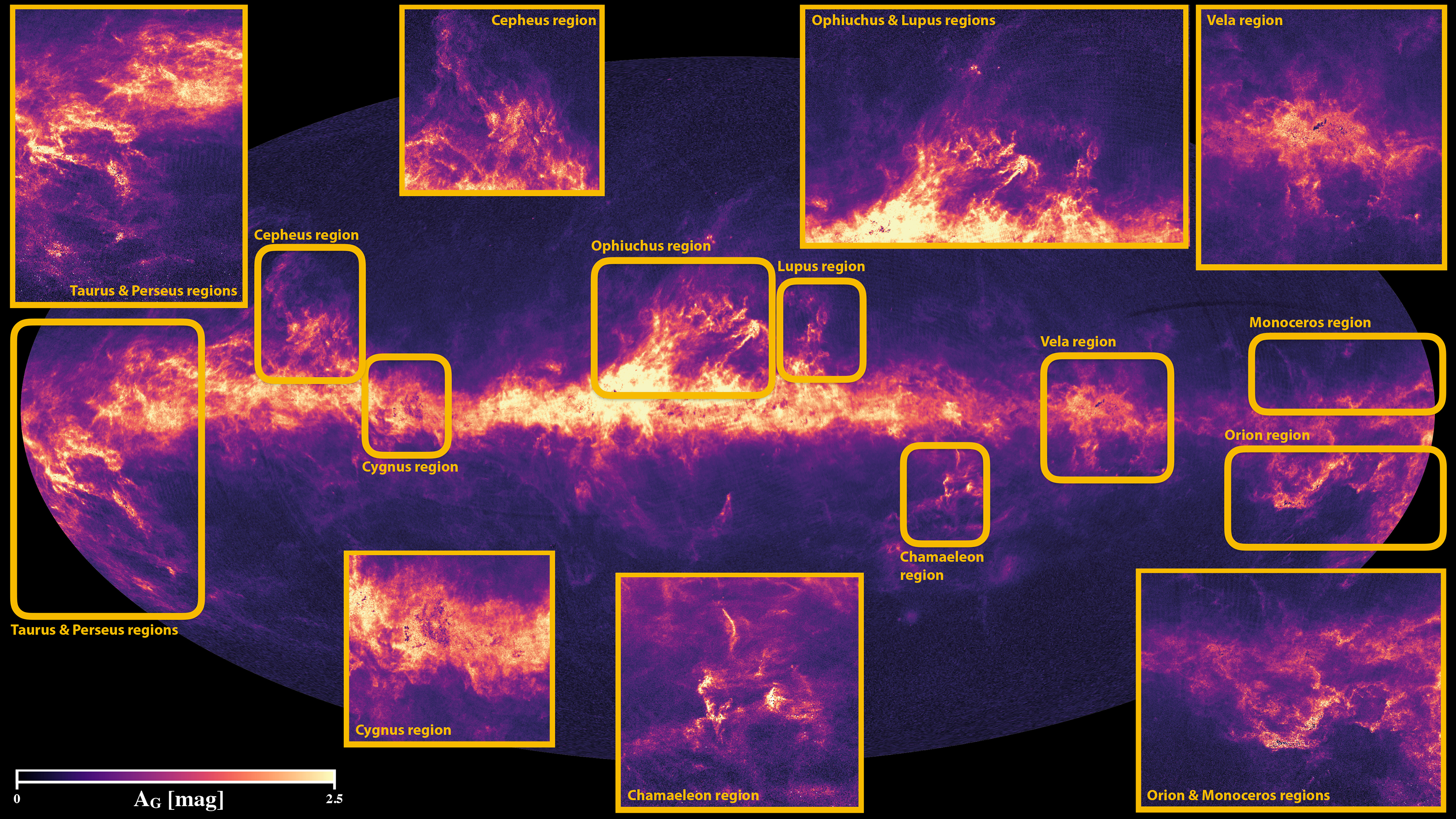Gaia project
- url: Gaia Cosmos Portal
- Gaia measures the positions, distances, space motions and many physical characteristics of some one billion stars in our Galaxy and beyond.
Gaia Astrophysical Parameters
The second data release of ESA’s Gaia satellite, published April 2018, not only includes data that allows us to compute accurate distances for 1.33 billion stars. we have also used Gaia’s measurements to derive the physical properties of almost 80 million stars, making this the largest stellar census yet. At the same time, the analysis provides the most detailed three-dimensional map of dust in our home galaxy yet, which promises to put the analysis of celestial objects on a more solid footing than before. However, this dataset remains a teaser to the future Gaia data relases.

